Article by
Marc, filed under
Vintage & Retro in the
Technology category.
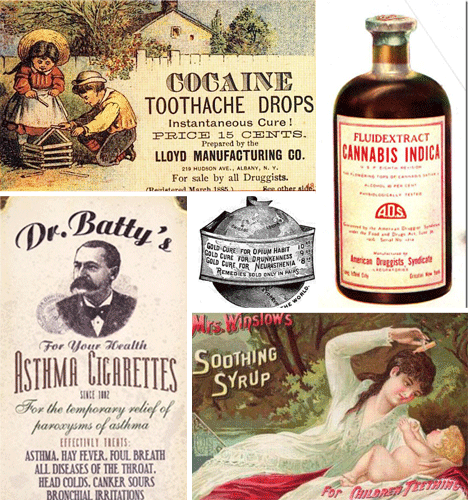
In the 19th century, science was king. Everyone thought we’d reached
the pinnacle of human invention and knowledge, and we would soon be
living in a utopia. Doctors were held in unquestioned regard, and when
they came out with a new cure, it worked! Because why would anyone lie
about something like that? Before governments decided it would be a good
idea to truly regulate claims made by medicine makers, sleazy snake oil
peddlers and medicine showmen traveled the world selling tonics that
would make fantastic claims. Looking back on some of the
products even the most mainstream companies created is a bit… unsettling.
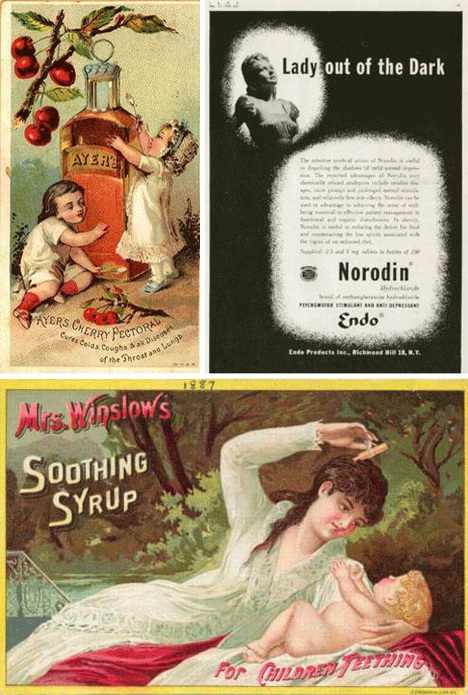
The scariest part of wildly untested drugs are the ingredients that
we now know have very intense effects. For example, Victorian parents
used to administer drugs containing opium to their children to help
quiet them down when they went away to work. Nefarious ingredients were
slipped into soothing syrups for teething children, or to help settle
down a child’s cough.
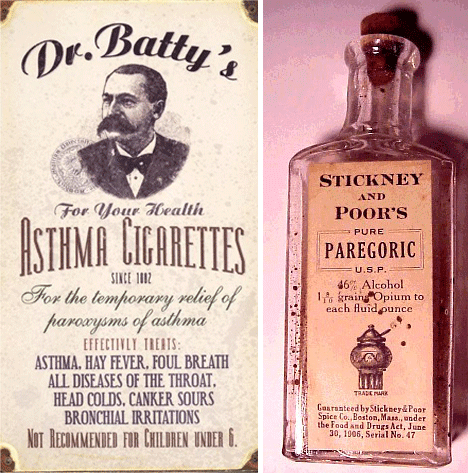
The road to hell is paved with good intentions, and let’s hope
intentions were pure when companies were creating such obviously (now)
bad ideas as cigarettes to help soothe asthma. Interestingly enough,
Paregoric, which contains powdered opium, is still available in
medications, but to a much more limited extent.
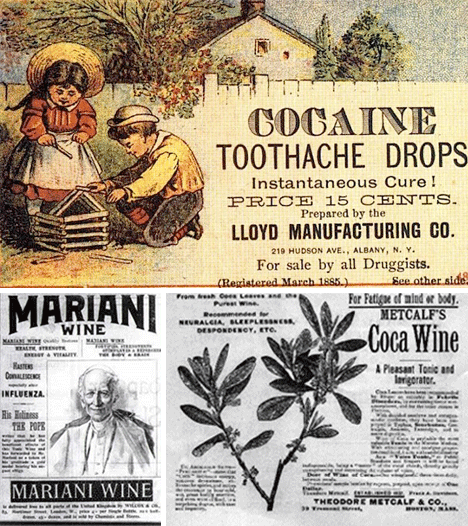
It’s widely known that Freud thought cocaine was a
wonder
drug that helped the mind, but so did the Pope! Cocaine used to be used
in everything from cough drops, to wine, and even to soda (coca-cola’s
original incarnation). Pope Leo XIII enjoyed Mariani’s coca wine so much
that he awarded it a Vatican medal, and they used his image in their
advertising. Queen Victoria and Thomas Edison were also said to be great
fans.
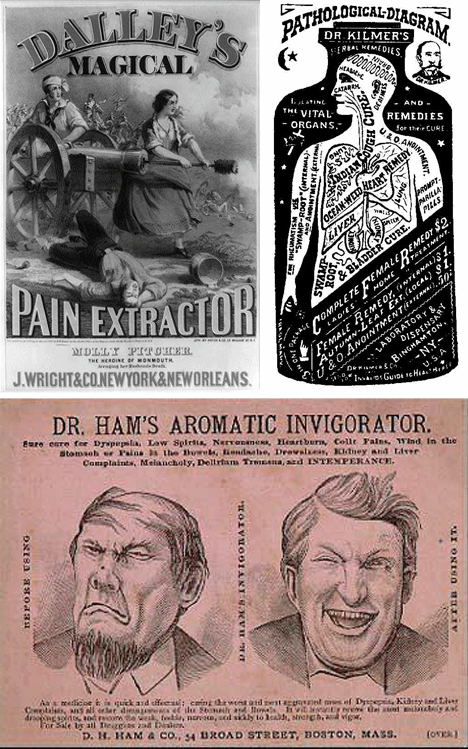
The packaging of medicinal
products
used to say it all. Package decorations varied from the most epic
scenes of courage and defense, to intense, clearly very scientific
diagrams, all the way down to emotional illustrations meant to grab your
attention. Despite reforms, drug companies still advertise similarly;
they showcase confident families and business people grinning and going
about their day with a purpose that the sick just don’t have.
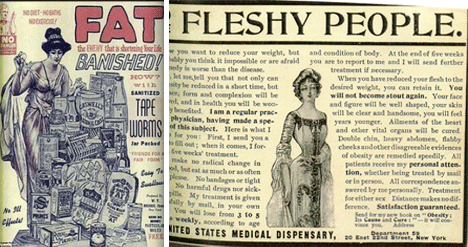
The tone of
vintage
advertising is always interesting, but if you think ads promising
weight loss are outrageous now, take a crack at these wonderful
examples. Besides the fact that most people would find consuming
tapeworms abhorrent, the colorful language and ridiculous imagery makes
these ads a delight.

You have to give old time doctors credit – they were creative. They
loved to come up with long lists of ailments that sound great but are
difficult to pinpoint. For example, stomach chills and nervous and
chronic diseases are common ones. How many doctors today could fashion
an artificial ear drum better than the real thing? Or an electric belt
that has curative properties without the use of medicine? Unfortunately,
these
products don’t sound too far fetched for anyone who watches the occasional infomercial.
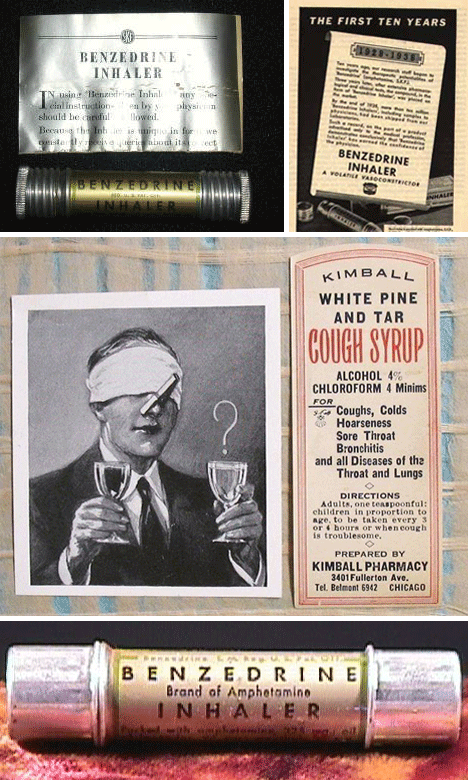
Benzedrine used to be an incredibly popular inhaler, chock full of
amphetamines (known more commonly as speed), which was widely touted as
increasing wakefulness and focus, with the added benefit of decreasing
appetite. Amphetamines were sold under many brand names, and were most
commonly used to assist weight loss.

It might be surprising to dig into the past of some of our most popular drug companies, such as Bayer’s branded
product
“Heroin” which was touted as a non addictive substitute for morphine…
until it was discovered that it actually metabolized into morphine, only
on a much more powerful scale.
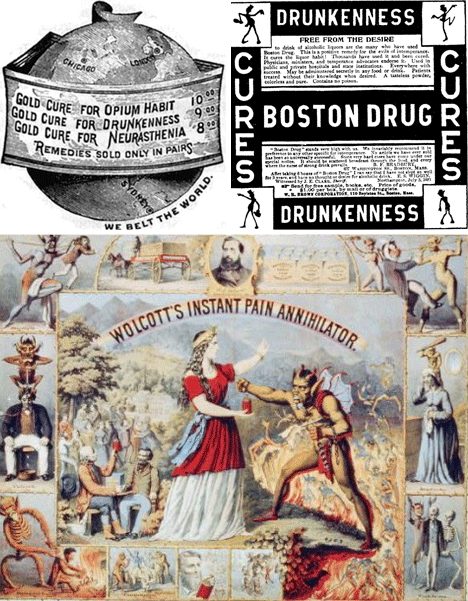
We may not have changed as much as we’d like from the Victorian era,
but at least the population is (hopefully) a bit more knowledgeable, and
there is quite a bit more regulation. Judging from the past, this is a
good thing. One thing the Victorians always did with style, however, is
make some damn beautiful packaging.












No comments:
Post a Comment